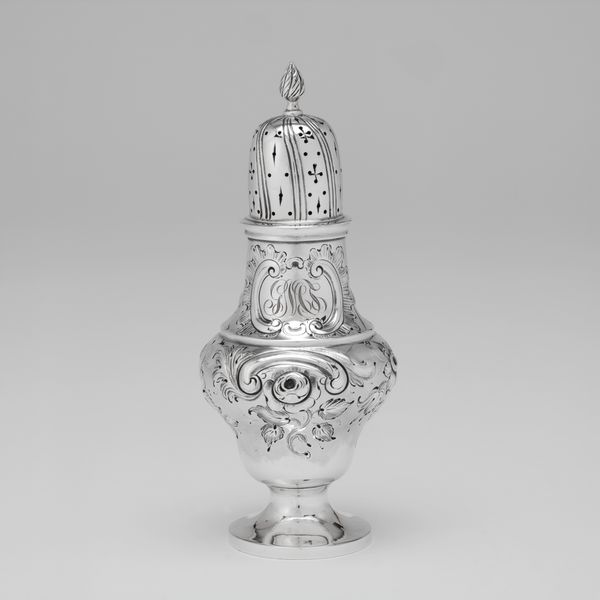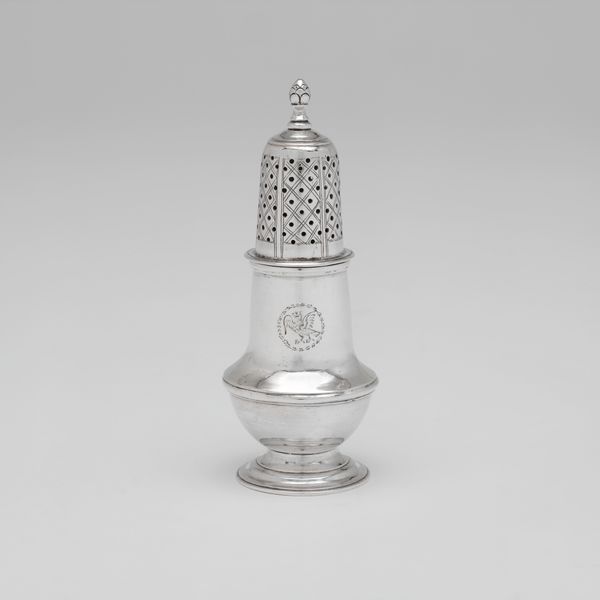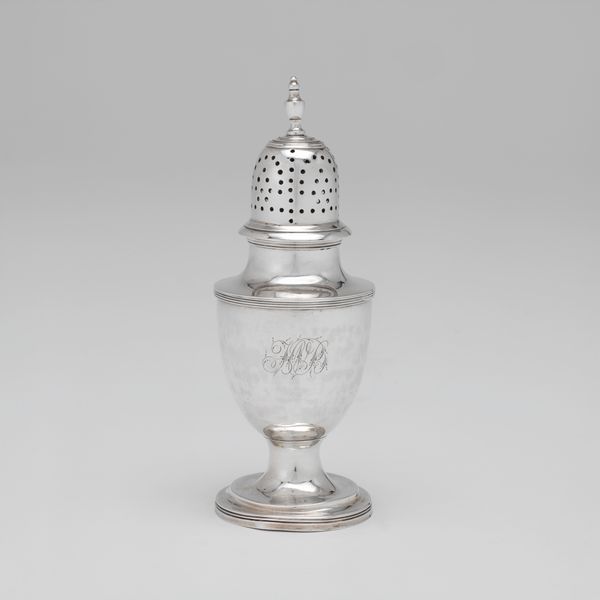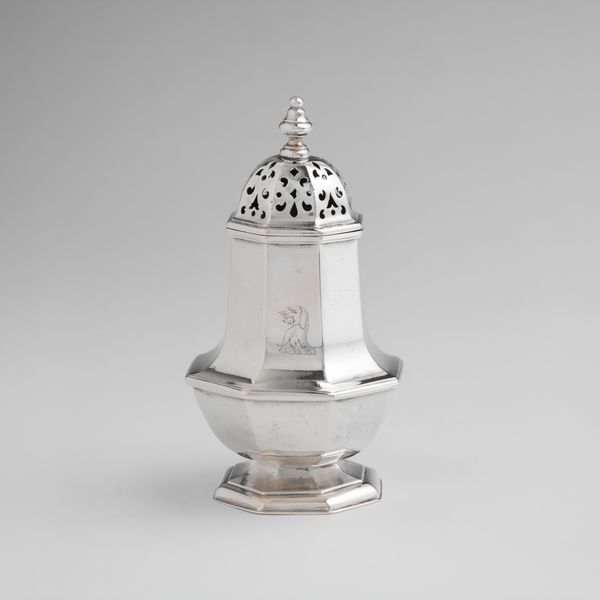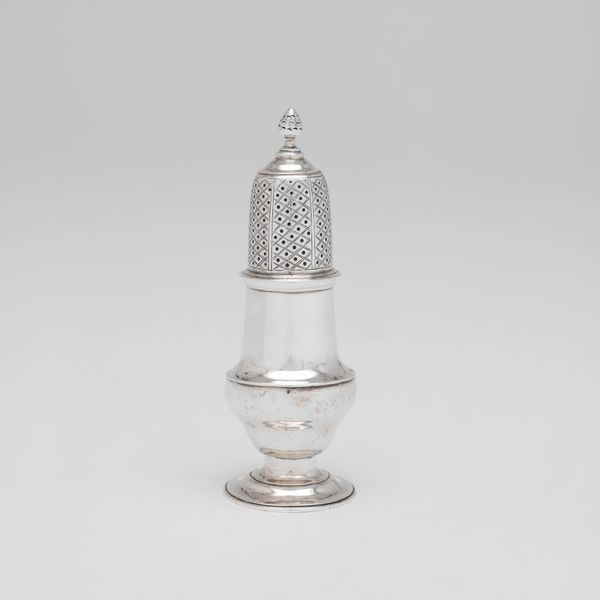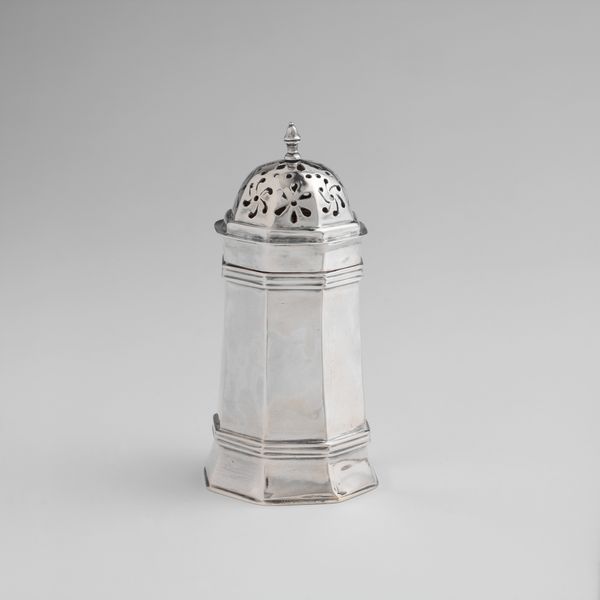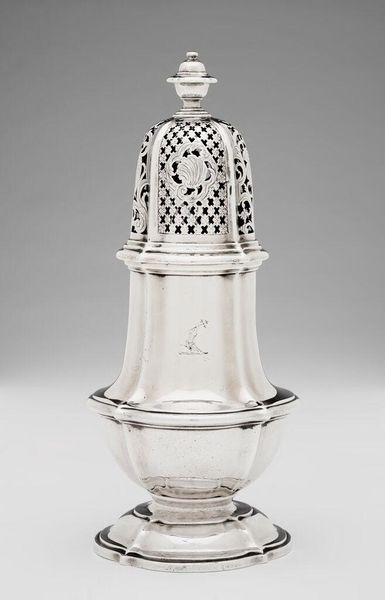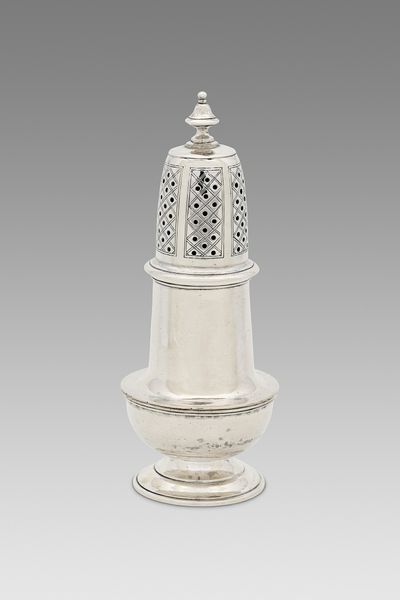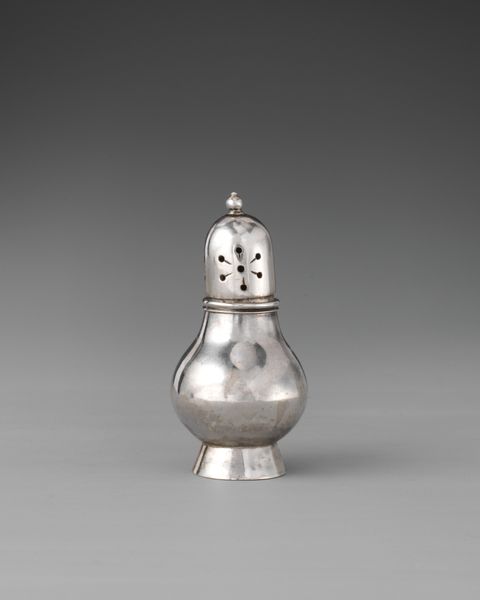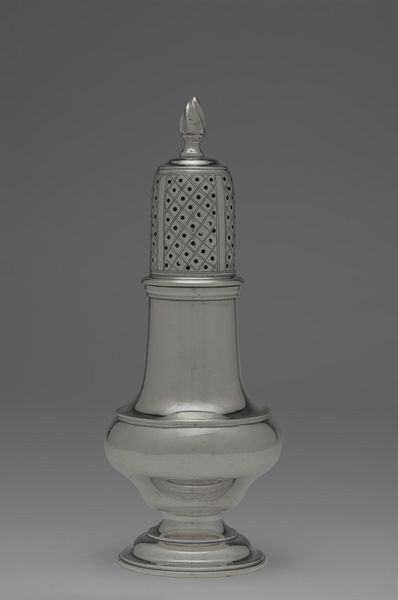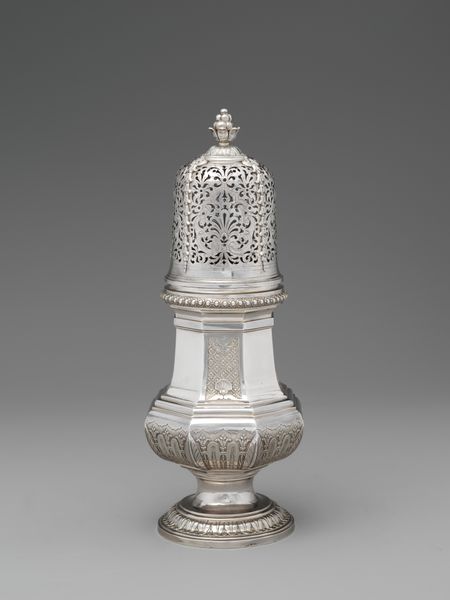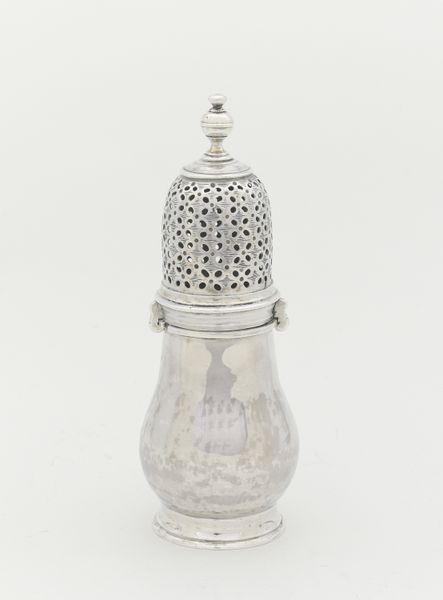
silver, metal
#
silver
#
baroque
#
metal
#
stoneware
#
decorative-art
Dimensions: Overall: 6 15/16 x 2 5/8 in. (17.6 x 6.7 cm); 8 oz. 16 dwt. (273.1 g) Foot: Diam. 2 5/16 in. (5.9 cm) Body: H. 4 in. (10.2 cm); 6 oz. 2 dwt. (189.5 g) Cover: H. 3 1/2 in. (8.9 cm); 2 oz. 14 dwt. (83.6 g)
Copyright: Public Domain
This caster was crafted by Charles Le Roux, an artist active around the turn of the 18th century. The starkness of the silver, reflecting light from every facet, initially strikes the eye. Its form consists of three distinct, yet connected parts: the foot, body and cover. Note the foot, how it anchors the piece with its solid, circular base, a gesture of stability. Ascending from this is the body, its hammered texture catching light and shadow, a play of surface that enlivens the metal. Above, the perforated cover with its grid-like openings, introduces a pattern that contrasts with the smooth planes below. This element is more than decorative, it's structural, designed to sift and control the flow of the caster's contents. Le Roux's caster sits at the intersection of functionality and artistry, where the structure enhances the object's purpose. The interplay of textures and shapes embodies a complex, yet harmonious balance. This allows us to reflect on not just what we see, but how we perceive the structure of form itself.
Comments
No comments
Be the first to comment and join the conversation on the ultimate creative platform.
